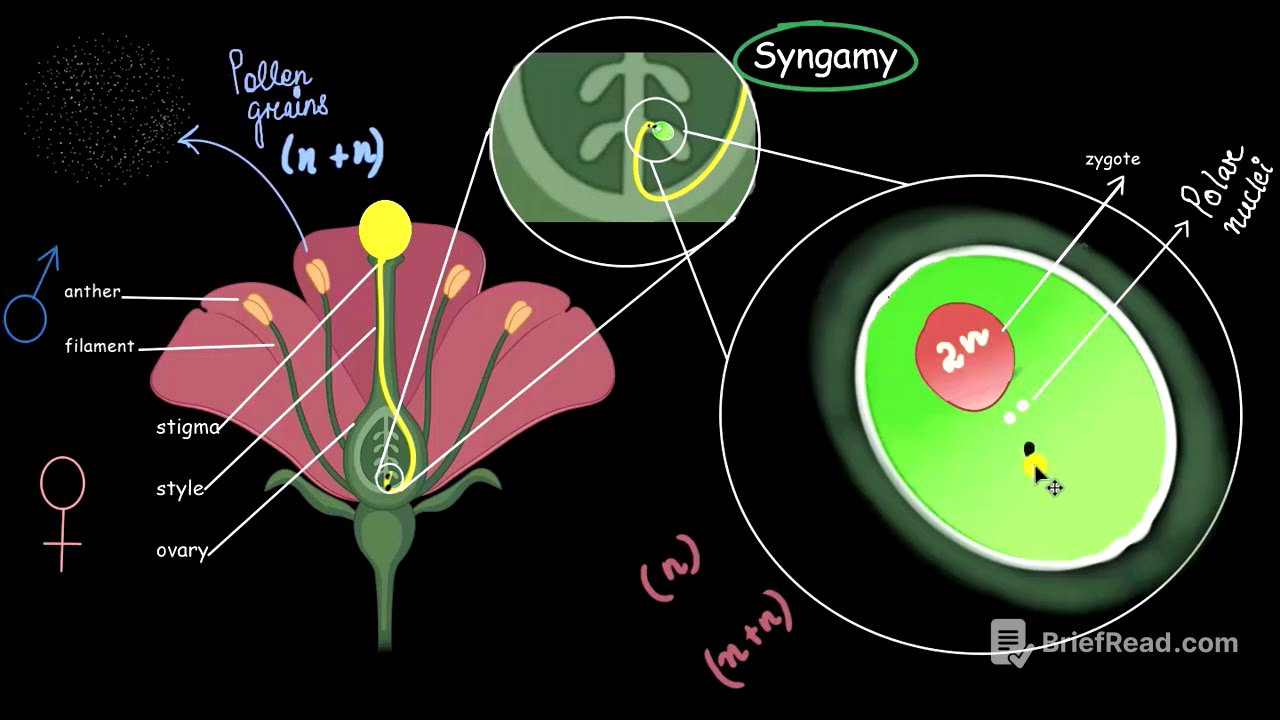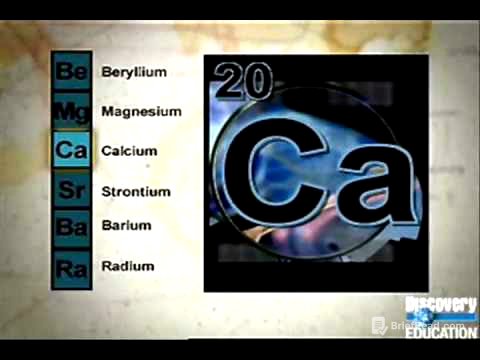TLDR;
This video explains the process of fertilization in flowering plants, focusing on the fusion of male and female gametes. It details the roles of different cells within the embryo sac, including antipodal cells, synergids, the egg cell, and polar nuclei. The video further explains the concepts of syngamy, triple fusion, and double fertilization, highlighting the formation of the zygote and the primary endosperm nucleus, and concludes with a problem-solving exercise related to chromosome numbers in the endosperm nucleus.
- Pollen grains carry two male gametes to the stigma.
- The pollen tube guides male gametes to the ovule.
- Double fertilization involves one male gamete fusing with the egg cell to form a zygote and another fusing with polar nuclei to form the primary endosperm nucleus.
Introduction to Fertilization [0:00]
The video introduces the topic of fertilization in flowering plants, building upon previous discussions about the formation of male and female gametes. It uses a bisexual, self-pollinating flower as an example to explain how the male gametes from the flower can fuse with the female gamete of the same flower. The process begins with the release of pollen grains from the anther, which then land on the female part of the flower through various pollinating agents.
Journey to the Ovule [0:43]
The pollen grain, acting as a carrier for the two male gametes, travels to the stigma, the female reproductive part of the flower. Each pollen grain contains two haploid male gametes. The male gametes then travel down the style to reach the ovule with the help of a pollen tube, which facilitates their journey to the site of fertilization.
The Embryo Sac [1:31]
The video zooms into the ovule to examine the female gametophyte, or embryo sac, which contains the female gamete. The embryo sac consists of one large cell and several smaller cells, including three antipodal cells at the top, whose role in fertilization is not definitively known but are generally considered to disintegrate. Two synergid cells are located at the top, which guide the pollen tube using filiform structures.
The Process of Fertilization [3:54]
The pollen tube reaches the synergids, and one of the synergids disintegrates to allow the pollen tube to enter. The two male gametes then enter the synergid cell, and the synergids disintegrate after completing their function. The remaining structures include the egg cell (female gamete) and two polar nuclei in the center. All the nuclei and cells within the embryo sac are haploid.
Syngamy and Triple Fusion [5:56]
One of the male nuclei fuses with the egg cell in a process called syngamy or fertilization, resulting in a diploid zygote, which will later develop into an embryo and eventually a baby plant. The other male gamete fuses with the two polar nuclei to form the primary endosperm nucleus, a nutritive tissue that nourishes the developing zygote. The primary endosperm nucleus develops first to provide nourishment for the zygote.
Ploidy and Double Fertilization [7:22]
The primary endosperm nucleus is triploid (3n) because it results from the fusion of two haploid female nuclei and one haploid male gamete nucleus. This process is called triple fusion. Since one male gamete fuses with the egg cell and another with the polar nuclei, the entire process is termed double fertilization, which is characteristic of angiospermic plants.
Problem Solving: Chromosome Numbers [8:26]
The video presents a problem to calculate the number of chromosomes in the primary endosperm nucleus after double fertilization, given that each haploid nucleus in the embryo sac contains 10 chromosomes. Since the primary endosperm nucleus is formed by the fusion of three nuclei (two female and one male), each with 10 chromosomes, the total number of chromosomes in the primary endosperm nucleus is 30.









